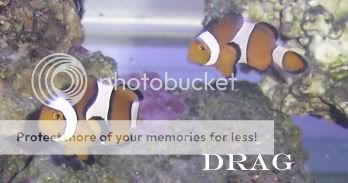Some fish stunned with cyanide on the way to
your aquarium
Group fighting illegal practice
DANIEL COONEY
Associated Press
NUSA DUA, Indonesia -- Ever wonder why some of the tropical salt-water fish you bought at the
pet shop die so soon?
Chances are, a diver in Indonesia or the Philippines caught them by first squirting cyanide into the
water, which stuns the fish and allows them to be easily scooped into a net.
After a few days, a fish usually appears to recover. It is then exported to the United States,
Europe and elsewhere to be sold in pet stores for anything up to $400.
After a month or two, though, traces of cyanide in the fish's system often attack its liver, eat away
at its digestive tract and corrode its respiratory system, until it dies.
But not only does cyanide irreversibly poison the fish it's used on, the toxin also damages the
ocean environment, killing other marine life.
So widespread is the problem that 1,000 environmentalists, marine biologists and pet-fish
collectors have set up a worldwide organization -- the Marine Aquarium Council -- to try to
eradicate the illegal practice.
Up to 20 million tropical salt-water fish are sold in the United States every year, said Paul
Holthus, head of the Honolulu-based group. Not all are poisoned, but many are, he said.
``Fish buyers are unknowingly contributing to the destruction of coral reefs and marine
ecosystems,'' he said.
Marine scientists meeting on Indonesia's tourist island of Bali recently warned that more than a
quarter of the world's coral reefs had been destroyed by pollution, global warming and poor
fishing practices, including the use of cyanide.
They said that unless urgent measures are taken, the remaining coral reefs may be dead within
20 years.
Mark Erdman, a San Francisco marine biologist who has long worked in Indonesia, said almost
all aquarium-bound fish caught in Indonesia are poisoned.
Fishermen often store the cyanide in cans on the ocean floor to escape detection by authorities.
They then dissolve a cyanide tablet in water in a plastic bottle. The deadly mixture is then
squirted at schools of fish living around coral outcrops.
Holthus said cyanide is also used widely in the Philippines.
Aquarium fish from the two countries account for much of the tropical salt-water fish imported by
the United States and Europe, he said.
The international aquarium fish trade is worth about $1 billion a year, experts said.
In two warehouses on Bali, hundreds of brightly colored fish float in small dirty tanks, waiting to
be packaged in water-filled plastic bags and flown out of the country. Clown tiger fish, with bright
yellow lips, sharp teeth and pink dorsal fins, lie on their sides, seemingly comatose from cyanide.
Holthus said the use of poison is limited to tropical salt-water varieties. More popular fresh-water
fish mostly come from commercial fish ponds and are chemical-free.
He said that by reforming the salt water segment of the industry, the welfare of marine life could
be improved and healthier fish would be provided for collectors.
Walt Smith, a businessman from Los Angeles who exports live fish from Fiji, said the problem is
not as widespread as some fear. He said all the fish he sends to the United States are caught
without poison.
The marine council plans to start monitoring fish exported from various parts of the world to
ensure that they have not been caught by divers using cyanide and that they are handled
professionally. Fish buyers in the United States and Europe will be able to look for Marine
Aquarium Council-certified fish in certain pet shops by the end of next year.
Mike King, a pet-fish retailer from Grand Rapids, Mich., said everyone will be a winner if
environmentally sound fish-collection practices are observed.
``Most consumers want to do the right thing for the environment and the fish,'' he said. ``They are
prepared to pay a little more for it.''







 but if i were to have an operation needing to be knocked out i dont beleive i would check the box to use cyanide. being knocked out is different than being poisoned.
but if i were to have an operation needing to be knocked out i dont beleive i would check the box to use cyanide. being knocked out is different than being poisoned.
